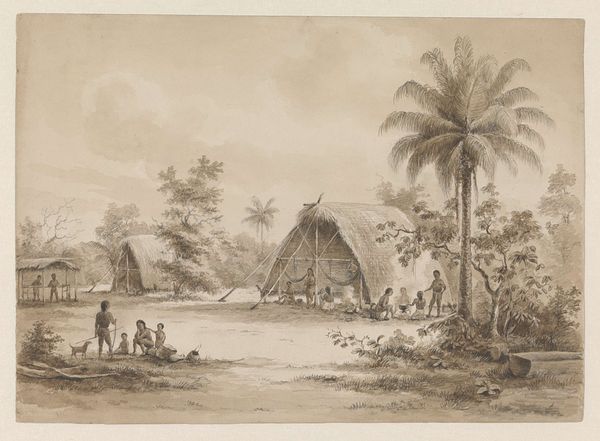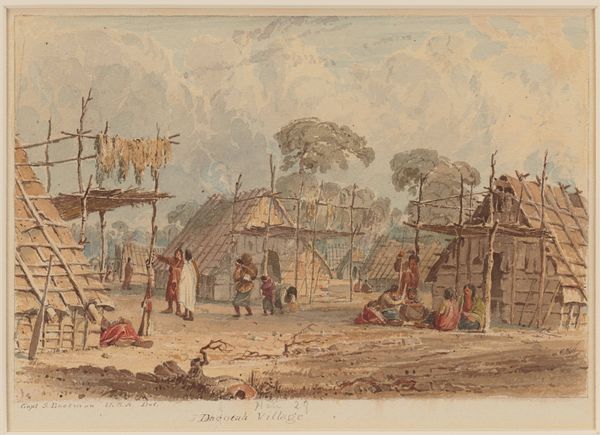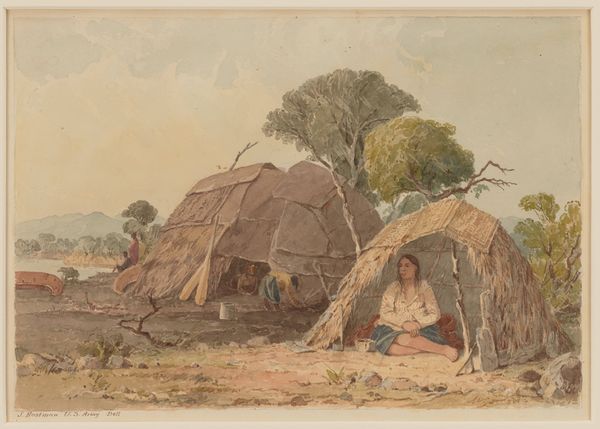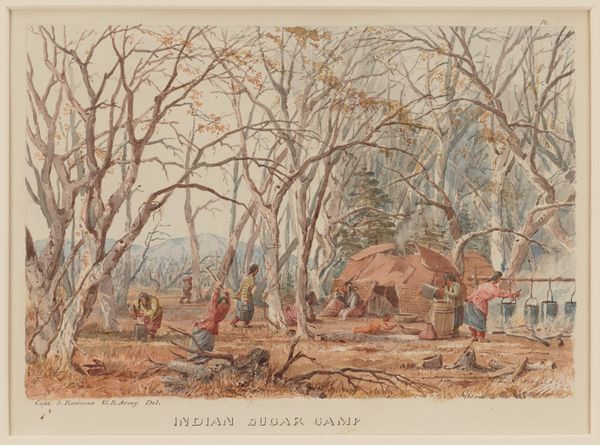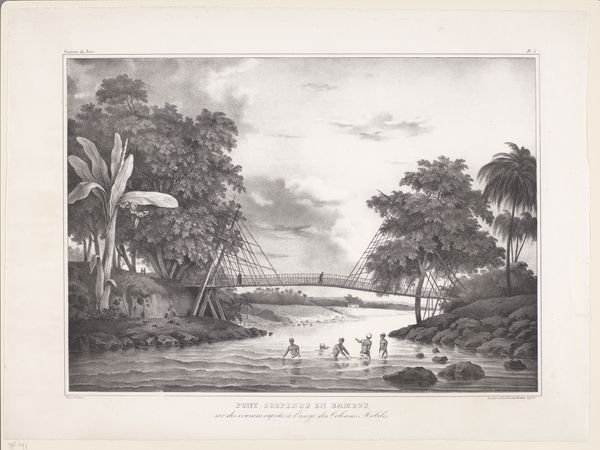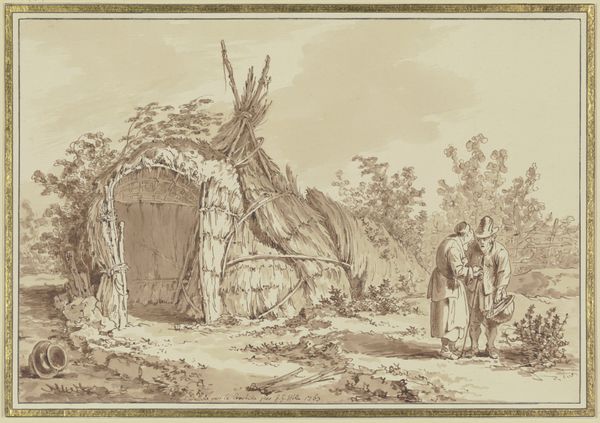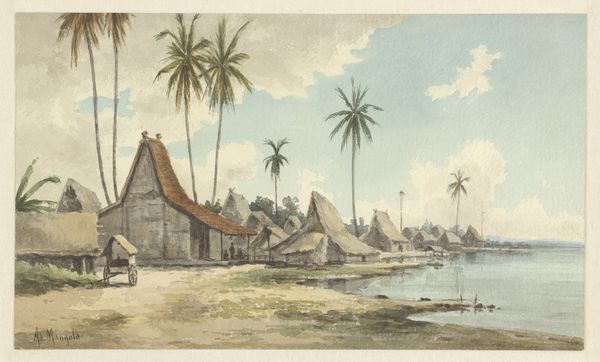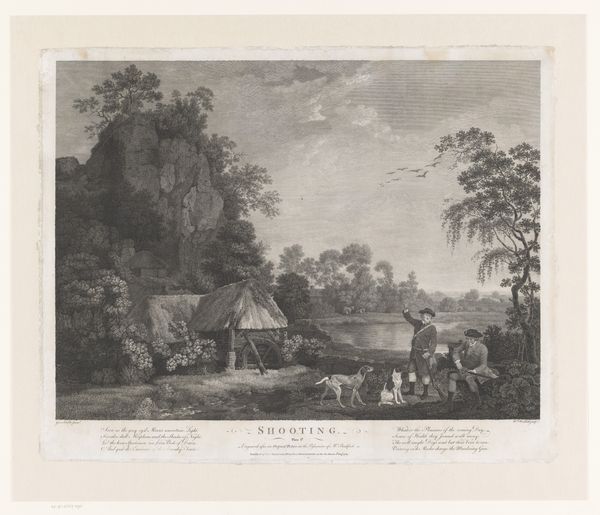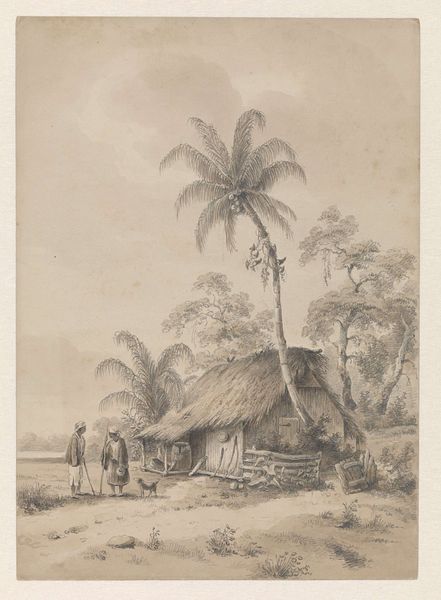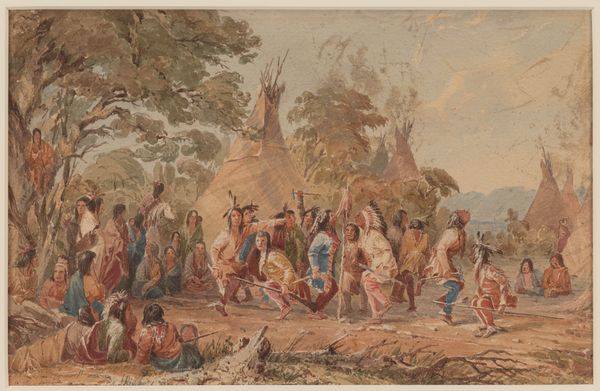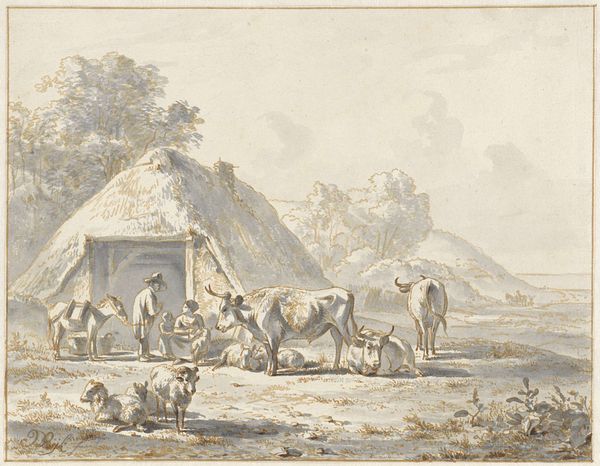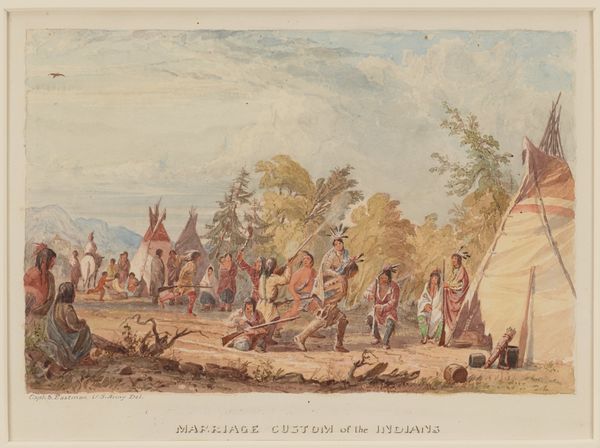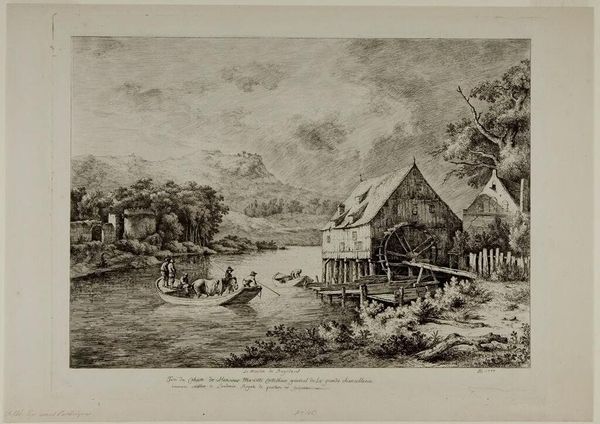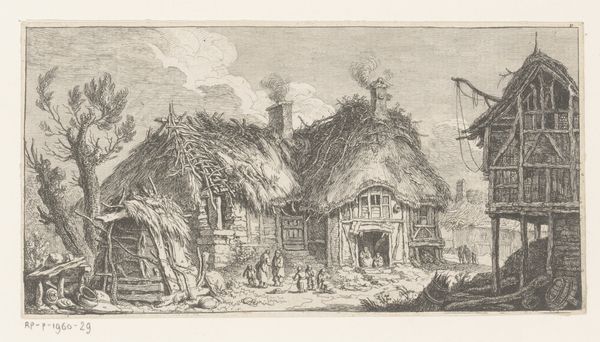
painting
#
narrative-art
#
painting
#
landscape
#
oil painting
Dimensions: 7 × 10 in. (17.8 × 25.4 cm) (image)10 × 13 3/16 in. (25.4 × 33.5 cm) (sheet)17 9/16 × 21 1/2 × 1 1/8 in. (44.6 × 54.6 × 2.9 cm) (outer frame)
Copyright: Public Domain
Seth Eastman, an artist and military officer, created this watercolor titled 'Dacotah Encampment'. Eastman's work provides a glimpse into 19th-century encounters between white colonizers and Indigenous communities. Eastman’s dual role complicates how we interpret his art. As an army officer, he participated in the violent expansion of the American West, and yet, he also meticulously documented Indigenous life. This work invites us to consider the power dynamics inherent in the act of representation. What does it mean when one culture attempts to capture another? Are these images a form of preservation, or a continuation of colonial power? Notice the intimate scenes of daily life: people gathered around their teepees, children playing, figures bathing in the river. What stories do you think they tell about identity, community and resistance? What is lost, or perhaps, gained in translation?
Comments
minneapolisinstituteofart almost 2 years ago
⋮
Before Captain Eastman’s long residence at Fort Snelling, he was posted there briefly in 1830 as a 22-year-old lieutenant. Within a year, he had married a Dakota chief’s daughter, Wakaninajinwin, or Stands Sacred, and had a daughter, known as Nancy Eastman. Although Eastman would return to the fort ten years later with a new wife, this early union undoubtedly opened him to the domestic side of Dakota life. Here he records small everyday activities against a sea of tipis, all constructed by women. This watercolor, one of 35 works on paper by Eastman in Mia’s collection, was the basis for an illustration in Henry Rowe Schoolcraft’s massive "Historical and Statistical Information Respecting the History, Condition, and Prospects of the Indian Tribes of the United States" (Philadelphia: Lippincott, Grambo & Co., 1851-57).
Join the conversation
Join millions of artists and users on Artera today and experience the ultimate creative platform.
